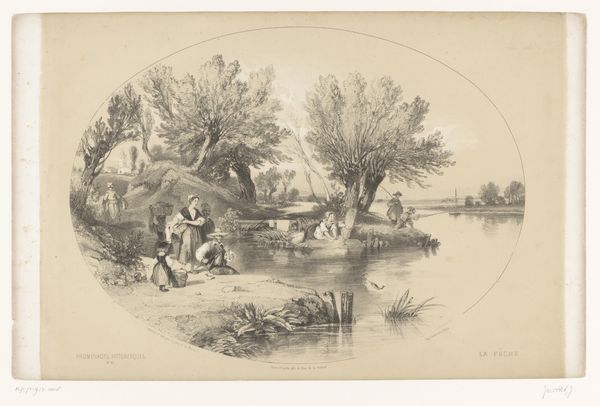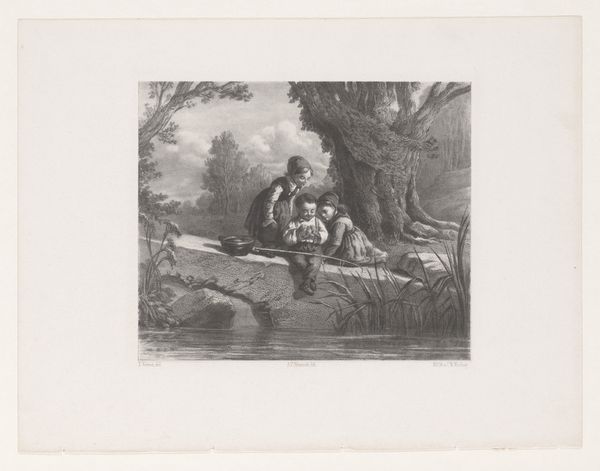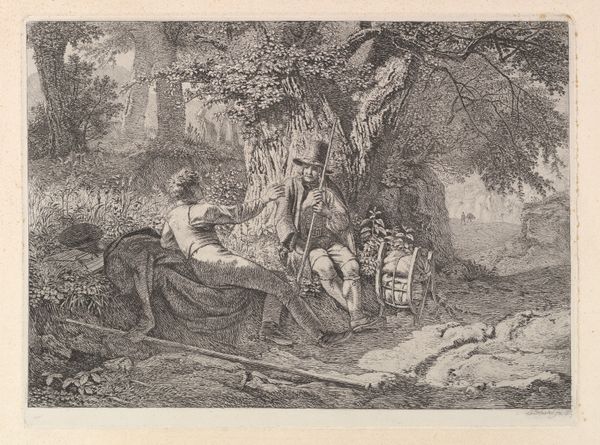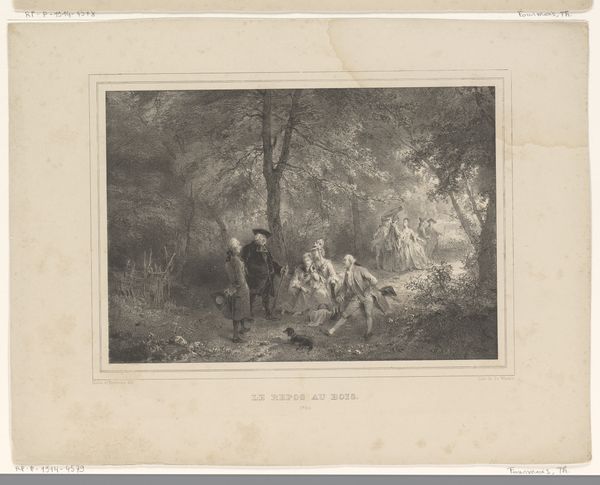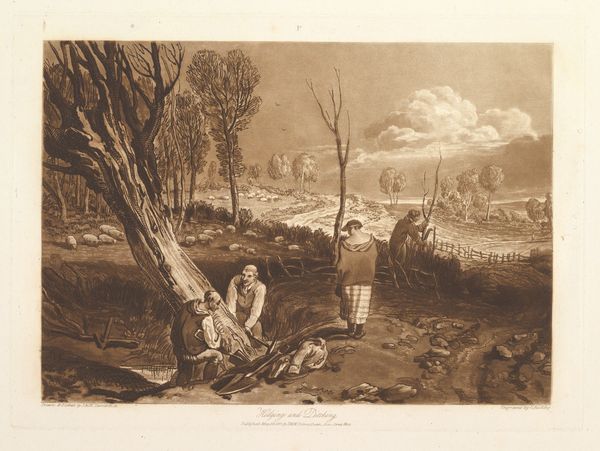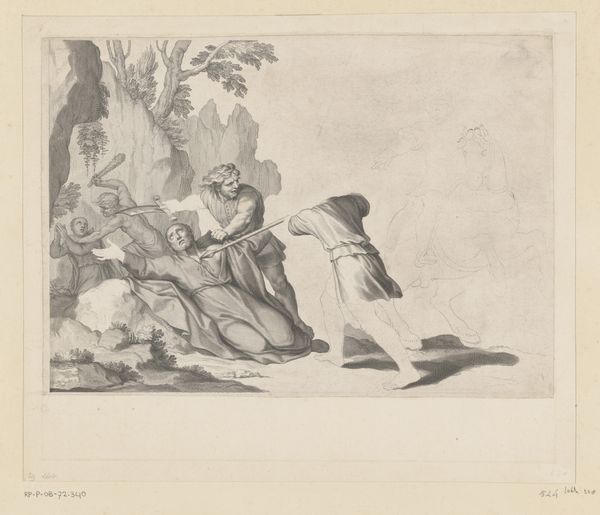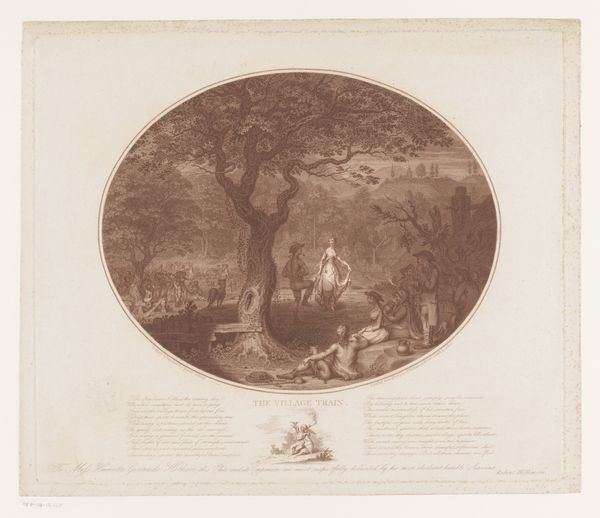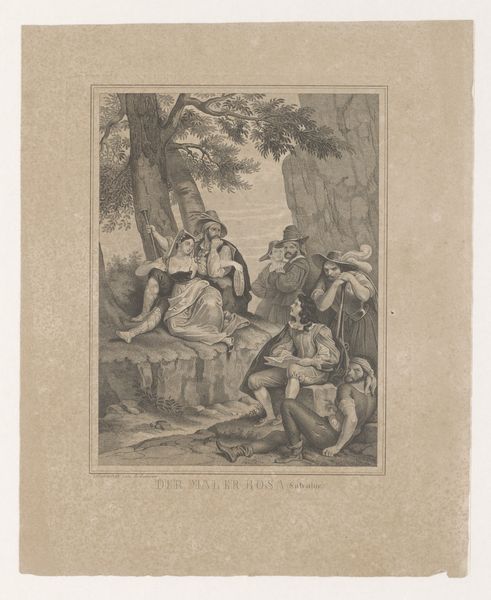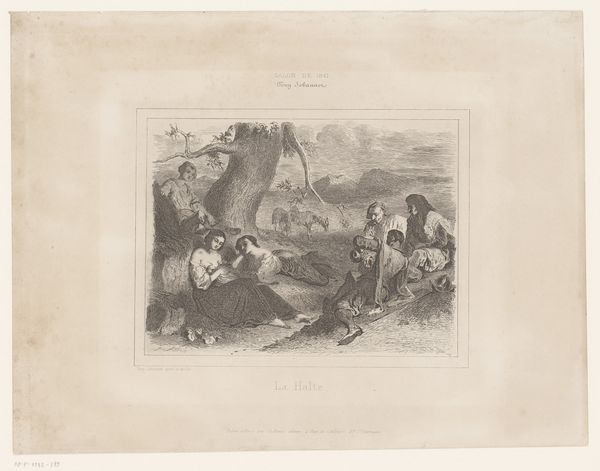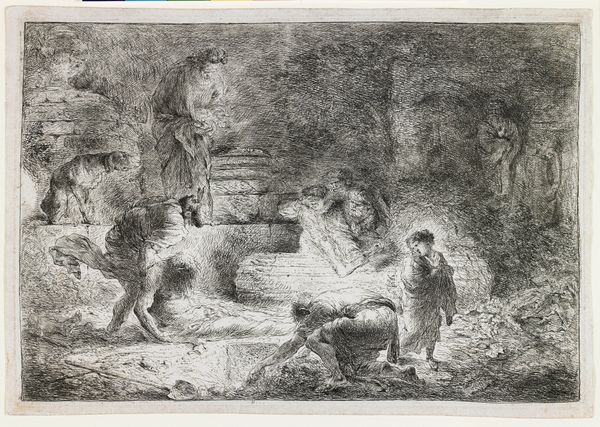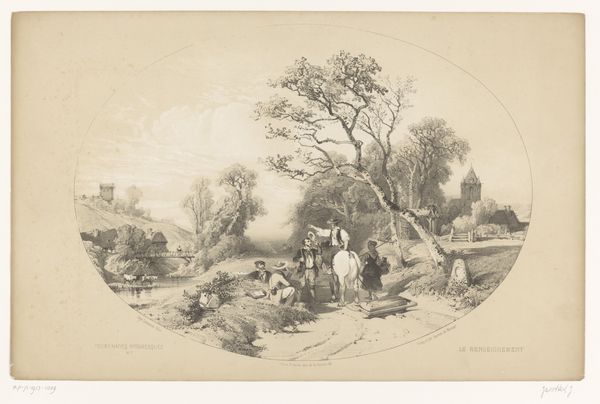
Dimensions: image: 21.5 x 30.8 cm (8 7/16 x 12 1/8 in.) sheet: 30.8 x 43.8 cm (12 1/8 x 17 1/4 in.)
Copyright: National Gallery of Art: CC0 1.0
This print, made by Célestin Nanteuil, is rendered in monochrome using a process called lithography. This printing technique, developed in the late 18th century, relies on the chemical repulsion of oil and water. Here, a flat stone – usually limestone – is treated so that the image areas attract oily ink, while the non-image areas repel it. The stone is then dampened and inked, and finally pressed against a sheet of paper to transfer the image. The social significance of lithography resides in its reproducibility. Unlike earlier forms of printmaking that required laborious carving, lithography allowed for relatively quick and inexpensive reproductions. This opened up visual culture to a much broader audience. In this particular example, the image depicts a scene from Don Quixote, suggesting the growth of a popular literary culture, and a corresponding demand for easily accessible illustration. Lithography democratized image-making, connecting artistic practice to industrial processes, labor, and the expanding marketplace of printed materials.
Comments
No comments
Be the first to comment and join the conversation on the ultimate creative platform.
